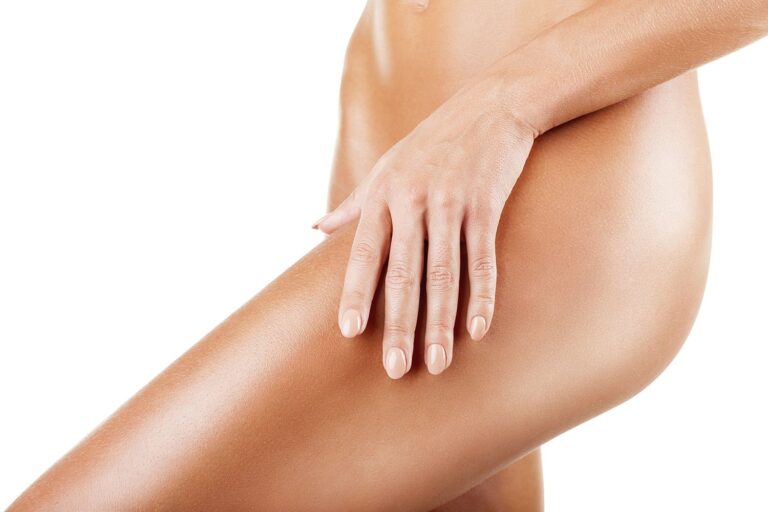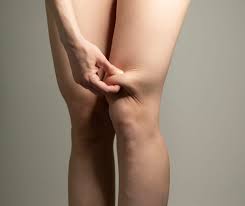Returning to Work After Liposuction: What You Need to Know
Key Takeaways
-
Give yourself plenty of time to heal following your liposuction surgery. It often takes a few weeks before you’ll be able to go back to work. Be sure to stay in close communication with your orthopedic surgeon to make sure you are healing appropriately.
-
Swelling, bruising, and discomfort are common symptoms following surgery. Do be on the lookout for any warning signs that require medical assistance, such as an infection or intense pain.
-
Implement cold compresses and compression garments to help control swelling and pain. Be sure to follow your pain management strategies as prescribed and adhere to good hygiene practices.
-
Make it realistic. Start by introducing easy activities such as walking into your day. Increase intensity over time, listen to your body, and avoid exercises that lead to pain or panic.
-
Assess your readiness to return to work by considering your physical and emotional state and communicate openly with your employer about any necessary adjustments or accommodations needed during your transition back.
-
Invest in comprehensive lifestyle changes that lead to sustained outcomes. Make healthy choices by eating a balanced diet, getting plenty of water, and exercising regularly to improve your overall wellness and chance of recovery.
Going back to work after liposuction requires organization and strategy. Physical activity and exercise should be restarted slowly to prevent injuries.
This is where lifestyle changes are especially important to keep up results, with an emphasis on healthy eating and increased physical activity. The recovery process is oriented around following doctor’s orders to the letter, with a focus on rest and hydration.
Following these preventative measures helps promote a seamless return to everyday activities, allowing the full liposuction results to last. Being educated and prepared allows expectations to be managed and builds trust and optimism about the path forward.
This model of care also gives heroes the tools to continue managing their health and welcome the changes they want to see after surgery.
Understanding Recovery After Liposuction
As one of the most common cosmetic procedures worldwide, aftercare and recovery from the liposuction procedure is crucial to consider. Healing varies for each individual, but understanding what to expect during recovery will help you set realistic expectations and maintain hope throughout the process.
What is the Recovery Timeline?
The Truth About Liposuction Recovery
Recovery from lipo occurs in different stages. Here’s a breakdown:
-
Immediate Post-Operative Care (First Week): Expect moderate pain and swelling. The first few weeks are about healing and managing basic wound care.
-
Short-Term Recovery (Weeks 2-4): As swelling starts to subside, you should see and feel a difference in your pain. Severity of pain often termed “burning” goes down.
-
Mid-Term Recovery (Weeks 4-6): You might be cleared to begin light duty, but physically demanding work is almost always off the table.
-
Long-Term Recovery (3-6 Months): Final results begin to emerge as swelling subsides. And by the six-month mark, nearly everyone is reaping the full rewards.
Follow-up appointments are essential. They help keep the healing process on schedule, correcting missteps quickly and modifying approaches to care when appropriate.
Common Post-Surgery Symptoms
Post-surgery symptoms often include:
-
Pain and Tenderness: Often characterized as achiness or a burning feeling, typically for a duration of three days or less.
-
Swelling and Bruising: Noticeable within the first week and can take months to subside completely.
These symptoms are the perimenopause norms. If they do get worse or you develop other complications, it’s important to talk to a healthcare provider as soon as possible.
Swelling reduction is crucial. Compression garments are one of the main components in recovery, limiting swelling and providing support.
Managing Discomfort and Swelling
Effective management techniques include:
-
Cold Compresses: Putting these on helps to bring down the swelling. By properly wrapping them, you avoid destructive skin friction.
-
Pain Management: Following prescribed strategies ensures comfort during recovery.
-
Hygiene Practices: Surgical sites that are clean, dry, and protected help prevent surgical site infection and support the body’s natural healing process.
Safely Resuming Physical Activity
1. Start with Light Movements
Beginning your life after liposuction means welcoming the body’s natural recovery process with safe, soothing movement. Short walks at a slow pace allow you to gradually return to exercise without overexerting yourself.
Consider light activities such as:
-
Walking for 15-20 minutes to boost circulation
-
Gentle stretching to maintain flexibility
-
Simple yoga poses to improve balance
These low-intensity movements help restore healthy blood flow, promoting faster recovery without overstressing the body. Avoid high-impact activities, like running or heavy lifting, for at least 4-6 weeks following your surgery.
Don’t jump back in until your healthcare provider clears you to do so. In this stage, regular mobilization and movement are crucial to ensuring your healing progresses as it should.
2. Gradually Increase Exercise Intensity
Once your body has started to heal, you can start adding intensity to your workouts at a slow and steady pace. A gradual plan might look like this: continue short walks, then introduce activities such as gentle yoga or Pilates.
The main rule is to always listen to your body and don’t push past what’s comfortable. After approximately 4-6 weeks, you can begin to add in moderate exercises, putting emphasis on movements that do not put stress on the areas treated.
Start with 15-20 minute sessions, eventually increasing the time and intensity. Prevention hydration is key, so aim for a minimum of eight glasses of water each day when you’re exercising.
3. Monitor Your Body’s Response
Maintaining a journal of symptoms and reactions to various activities will be invaluable. This history provides a baseline from which to measure your rehabilitation progress and determine when it is time to make a change.
Be on the lookout for signs such as worsening pain, swelling, or new symptoms. These are all warning signs that it’s time to step back and/or contact a medical provider.
The most important thing you can do before surgery is maintain an open dialogue with your surgeon. Report any problems or atypical symptoms you notice as you return to activities.
4. Seek Professional Guidance
It’s very important that you hear it from your plastic surgeon that you are cleared to start exercising again. Working with a professional to craft personalized exercise routines that match your recovery level keeps you moving forward.
Approach your recovery with the help of a physical therapist, who can develop customized recovery strategies. By 12 weeks post-liposuction, your body should be prepared to resume high-impact exercises, of course, only after your surgeon gives their go-ahead.
Returning to Work After Liposuction
Assessing Your Readiness
Determining when you’re ready to return to work after liposuction includes physical and emotional factors. Keep an eye on the overall healing of your body. Determine if you are emotionally prepared to go back to your workplace.
If you have a job that requires physical labor, think about how these will affect your healing. Everyone else is returning to their office jobs in about two weeks. For those in labor-intensive occupations, it can take longer to recuperate.
Make your work space ergonomically friendly. Consider making your workspace more ergonomically friendly. Alternatively, you can negotiate with your supervisor to assume temporary duties that require less physical effort.
Understanding what it really means to be ready both makes for a smoother transition back to the workplace and protects your health.

Balancing Work and Healing
Balancing new demands with your new sober life will take strategic foresight. Co-creating work strategies that allow for healing will make the shift a bit less jarring.
Make accommodations. Focus on tasks that need the least physical strain and find ways to delegate tasks. It’s not just that this approach saves your energy; it provides a foundation for sustained recovery.
Regularly scheduled monitoring and periods of recovery can help you avoid overextending yourself and suffering a loss of strength and gains. Though much of the swelling subsides by four weeks, it can be helpful to keep a lighter schedule for at least that long.
Don’t perform any activities that require heavy lifting or cause impact, like running errands or heavy lifting, that might risk your healing procedure.
Communicating with Your Employer
Managing expectations and helping your employer understand your needs is essential. Communication is key to establishing a healthy, supportive work environment.
Be ready to talk about where you’re at in recovery, any limitations you have, and what sort of accommodations you will require. Having this conversation in advance sets realistic timelines and clears up any changes in responsibilities or availability.
Most importantly, continue to engage in discussion to mitigate problems as they arise. It creates a real community of collaboration as you move back to work.
Take care of your health and well-being above all else. A decent employer will understand that a thoughtful, staged return to work is best.
Lifestyle Changes for Long-term Results
To maintain your results from the liposuction procedure in the long-term, there are several steps that go beyond the cosmetic procedure. It takes a commitment to a holistic set of lifestyle changes that promote healing and long-term maintenance.
Healthy Eating Habits
Making healthy eating habits a way of life provides the best groundwork for maintaining liposuction results. Eating a well-balanced diet that includes plenty of lean proteins, fruits, and vegetables will help you recover and maintain a healthy weight.
A diet that limits unhealthy fats and sugars promotes the best possible body composition post-op. Hydration is just as important. Eight to ten glasses of water a day should be your goal, but you’ll need to adjust to your individual needs.
Working with a nutritionist can also help to offer more guidance on overall caloric needs and appropriate macronutrient ratios. Nutritious foods that can promote healing and maintain results include:
-
Lean proteins like chicken, fish, and legumes
-
Fresh fruits such as berries and oranges
-
Vegetables, particularly leafy greens and cruciferous varieties
-
Whole grains like quinoa and brown rice
-
Healthy fats from avocados and nuts
Regular Exercise Routine
Making movement part of everyday life is the second most important factor. The single most important factor in maintaining any weight loss is a regular exercise program that includes both aerobic exercise and resistance training.
Engaging in at least 30 minutes of moderate exercise daily and two weekly sessions focusing on major muscle groups is beneficial. Setting realistic fitness goals maintains motivation, and making changes according to how quickly your body heals brings comfort first.
Regular movement throughout the day helps not only in sticking with the results you’ve worked hard for, but being physically active keeps you healthy too.
Maintaining a Positive Mindset
Having a healthy, growth-oriented mindset is pretty much the key to recovering and being successful long-term. Fostering a compassionate approach to body image and the recovery process ultimately leads to better emotional health.
Joining communities or cohorts that support this work can offer inspiration, motivation, and a sense of collective experience. Including self-care practices such as meditation or yoga to address stress creates a more balanced and healthy lifestyle.
Combined with the help of non-invasive treatments such as CoolSculpting, this holistic approach fosters positive physical and emotional wellbeing.
Precautions During Post-Operative Period
Living during the post-operative phase after liposuction demands focus and caution. Listening to your doctor is the key to a successful procedure and recovery. Your surgeon’s instructions are customized specifically for you to promote the best healing possible, so it’s important to stick to them.
This means going to every follow-up appointment on time, which is an important part of keeping tabs on how well you’re healing and recovering. If you experience any new or unusual symptoms, speak with your healthcare provider right away. We want to respond to your needs as quickly as possible.
This proactive approach can help you avoid costly complications down the line and give you peace of mind.
Follow Medical Advice
The bottom line Following these post-operative instructions to the letter is one of the most important things you can do. These measures aim to ensure the healing process is as smooth as possible while reducing any hazards.
Most importantly, never miss a follow-up appointment — they’ll help ensure your recovery is monitored and progressing. If you develop any concerning symptoms such as worsening redness, fever, or unusual discharge, notify your healthcare provider immediately.
This allows for anyone to speak up if there are early signs of problems. Partnering with your health provider’s expertise is your best resource during recovery.
Avoid Strenuous Activities
Avoiding activities that require heavy lifting, excessive strain on the abdomen and high impact movements are important in the early recovery period. Those first two weeks are the most important time for your recovery.
Be sure to avoid anything that might lead to a significant rise in your heart rate. Progressively return to more vigorous activities only when medically cleared.
In particular, focus on low-impact exercises during this period to help keep your fitness level up without risking post-op complications. Gentle activities such as walking are wonderful, as long as you’re not overdoing it.
Recognize Signs of Complications
Keeping an eye out for any red flags like too much swelling, really bad pain, or lots of redness is really important. If you notice symptoms including fever or abnormal drainage from incisions, you should call your surgeon right away.
Everyone recovers differently, and it’s important to be patient as swelling can take several months to completely go down. Staying away from smoking and second-hand smoke is critical too as this will also delay the healing process.
Conclusion
Returning to work after liposuction is all about balance. You’ve done the hard work of learning to listen to your body and respect its needs. Moving with caution ensures you return to work in a healthy manner. Take your time, and allow yourself the time to heal fully. Safe mobility post-surgery is critical, and being active aids in healing and recovery. Listen to your doctor and follow their instructions to the letter. Good habits are incredibly important to maintaining results long term. Get regular physical activity, a healthy diet, and proper stress management. This may not be an easy road, but a satisfying, healthier lifestyle awaits. Remember these thoughts and you’ll see that jobs and rebuilding are a perfect match. To see more tips and tricks, visit our blog.
Frequently Asked Questions
How long should I wait before returning to work after liposuction?
The vast majority are back at work in one to two weeks after their cosmetic procedure, which really depends on the invasiveness of the liposuction treatment and your personal healing time. Always follow your surgeon’s instructions for your individual needs.
When can I start exercising again post-liposuction?
Light activities such as walking can typically be resumed after 3 to 4 days post-liposuction procedure. However, it is crucial to avoid all forms of moderate to vigorous exercise for at least 2 weeks, postponing high-impact activities until your physician has cleared you for such exercises.
What are some precautions to take during recovery?
Avoid any strenuous activities or heavy lifting after your cosmetic procedure. Clean the incision site with soap and water, stay hydrated, and follow your surgeon’s post-op directions for a smooth recovery.
How can lifestyle changes impact long-term liposuction results?
Pairing your liposuction procedure with a healthy diet and exercise routine enhances the chances of maintaining your new body contour long term. By preventing further unwanted weight gain, these healthier lifestyle habits not only support your liposuction results but also promote overall well-being.
Are there any signs of complications I should watch for post-surgery?
Call your doctor if you notice increased swelling, severe pain, or foul-smelling discharge after your liposuction procedure. These might be early signs of trouble. If you experience any of these symptoms, get in touch with your surgeon right away.
Is it normal to feel tired during the recovery period?
Yes, fatigue is pretty normal following the liposuction procedure. Since your body is still healing from this cosmetic procedure, be sure to get lots of rest and not push yourself too hard.
Can I work remotely during my liposuction recovery?
Working remotely is rarely, if ever, a proper alternative after a liposuction procedure. It helps you get your much-needed rest and healing while still being able to be productive, ensuring that your recovery from this cosmetic procedure isn’t hindered.






